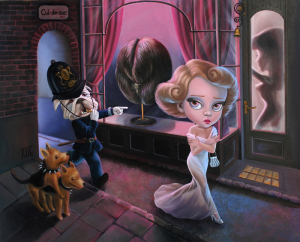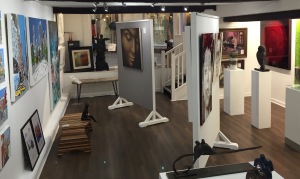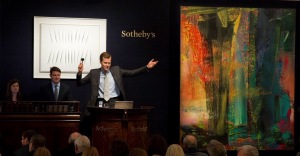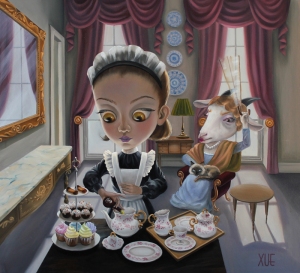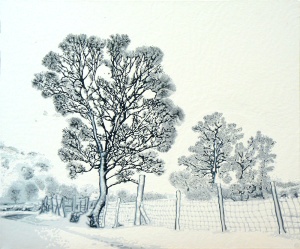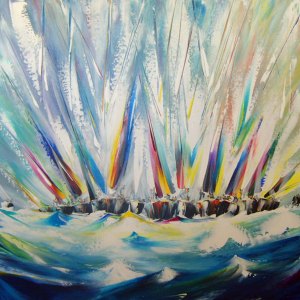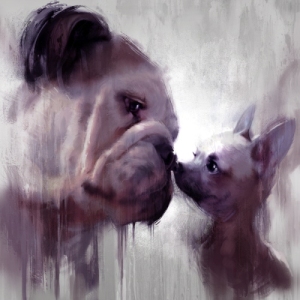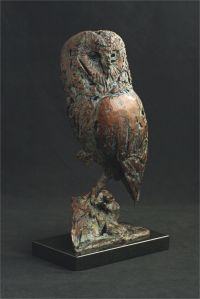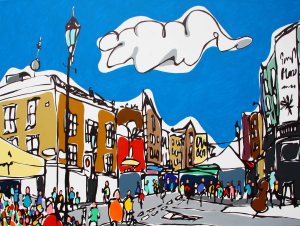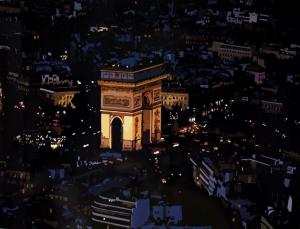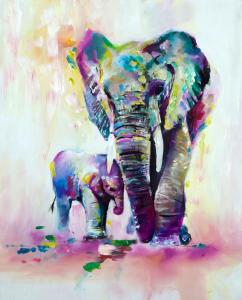 “Mother and Baby”
“Mother and Baby”
This young artist, based in Lincoln, (UK) demonstrates her love and understanding of her medium in her ethereal, colour rich paintings of wildlife. Inspired by the work of French artist Odilon Redon, Dobson brings a lavish quality to the animals that she depicts on canvas. Brush strokes, scratches and the sheer exuberance of the laying on of paint make her exciting representations of noble beasts a pleasure to behold. But given the popularity of animals as subject matter, evidenced in the success of David Shepherd’s work over the years, is Dobson’s work the 21st century’s answer to wildlife painting?
By way of comparison, David Shepherd’s work ‘Ahmed’
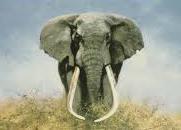
and Katy Jade Dobson’s work ‘His Majesty’

both show a bull elephant in his pride, fully alert and looking frankly magnificent. But how does our response to the different way these beasts are shown evidence a shift in taste in the wildlife genre buying public? Shepherd’s seemingly photo realistic ‘Ahmed’ appears in a dust cloud, set against a tropical blue sky, as though he has been captured pictorially in situ. But how realistic is that version of ‘in situ’? Is it so very different from the non-background to Dobson’s ‘His Majesty’? I would argue that both settings are alien to the majority of the public, most not having personally experienced the landscape in which an elephant roams. Therefore, the space given by Dobson to her multi-hued creature is as valid and as tangible in reality as the idyll represented in Shepherd’s work. This absence, this permission for the audience to view the elephant as they will, lends a more contemporary tone to the depiction of the bull, surely more fitting in a 21st century environment. The skill of Dobson in visually reproducing the animal and giving it its own space to be admired is a stunning tribute not only to her skill as a wildlife artist, but to her sensitivity and understanding of her genre.
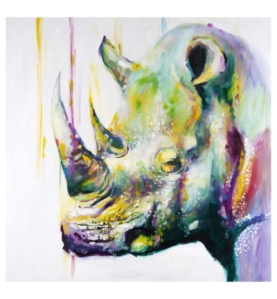
“Strength” by Katy Jade Dobson
Signed limited edition print on paper. (Edition of just 45 copies)
Presented in an off white card mount and big black, ornate frame.
£345, spread the payment with Own Art. No deposit, followed by 10 equal monthly instalments of £34.50.
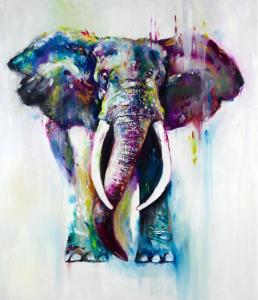
“His Majesty” by Katy Jade Dobson
Signed limited edition print on paper. (Edition of just 75 copies)
Presented in an off white card mount and big black, ornate frame.
£345, spread the payment with Own Art. No deposit, followed by 10 equal monthly instalments of £34.50.
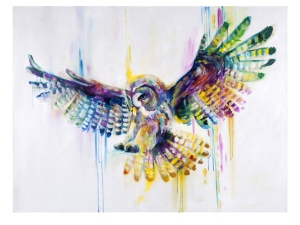
“Wisdom” by Katy Jade Dobson
Signed limited edition print on paper. (Edition of just 45 copies)
All works are available in the Nottingham gallery. Come and see them in the flesh. For more information regarding these or original paintings please contact the gallery. {01159243555} {george@georgethorntonart.com}
